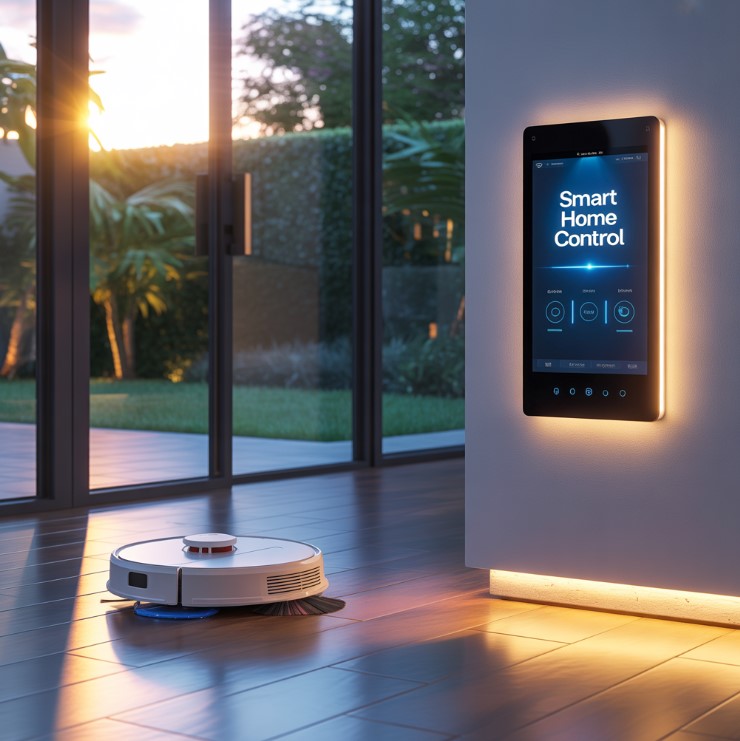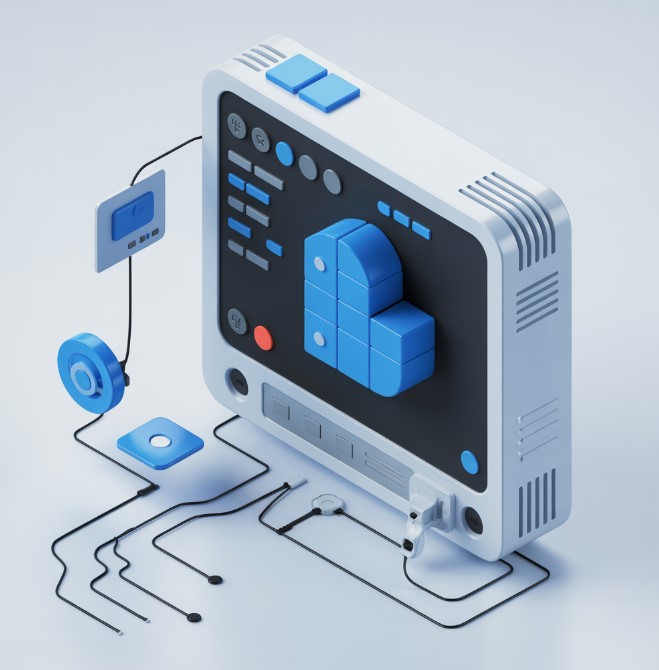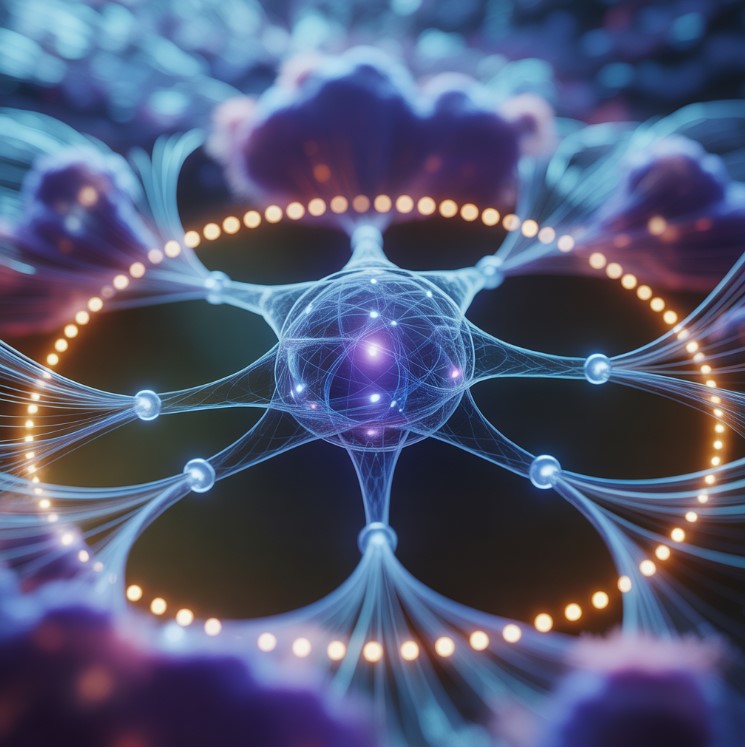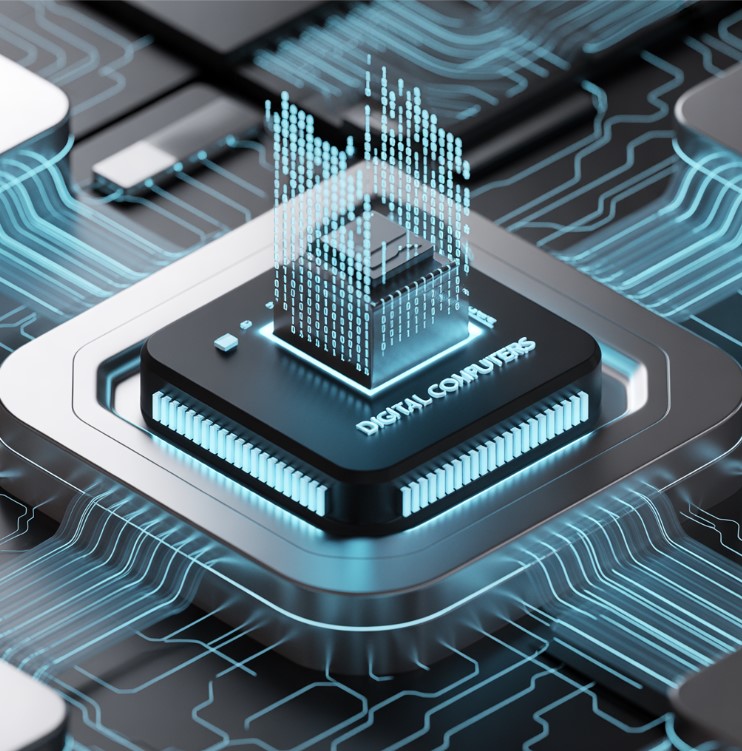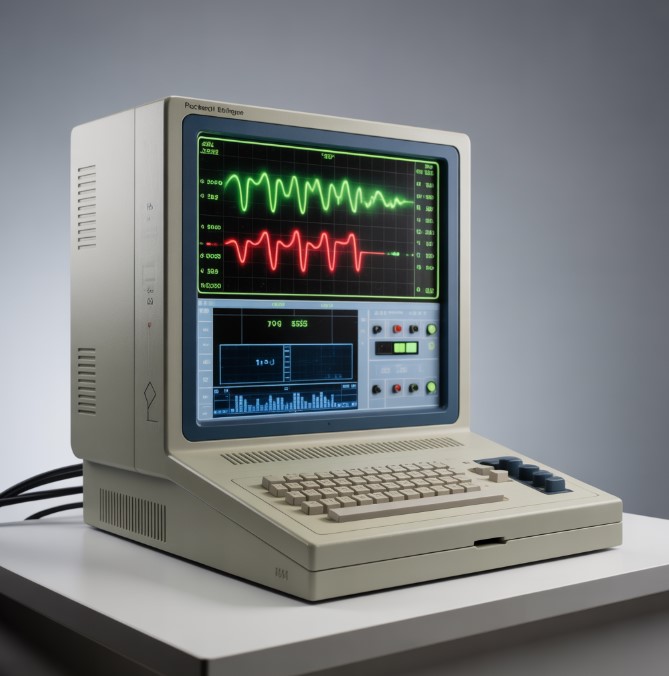Contents
A modern home automation system creates a smart home environment, offering significant advantages of home automation such as enhanced home security and substantial energy savings for an improved quality of life.
Home automation refers to the automatic and electronic control of household features, activities, and appliances. The goal is to create a smart home where various devices and systems can communicate with each other to perform actions without manual intervention. This isn’t science fiction; in reality, it is the practical integration of different technologies to create a more comfortable, secure, and efficient living space. A smart home equipped with home automation systems provides a superior level of intelligent home control, improving quality of life for its occupants.
Understanding the Core of Home Automation Systems
At its heart, a smart home network consists of hardware, communication protocols, and a user interface. These elements work together to execute the commands that make intelligent home control possible. The central idea is to connect controllable devices to a central hub or gateway, which is then managed by the user through a smartphone, tablet, or voice commands. These home automation systems are designed to be flexible, allowing for solutions tailored to different types of homes.
The primary components include:
- Controllers: The “brain” of the smart home, such as a smart hub, a mobile app, or a dedicated computer. This is where you set schedules and rules for your devices.
- Sensors: These devices detect changes in the environment, such as motion, temperature, light, and whether a door is open. They send signals to the controller to trigger actions.
- Actuators: These are the switches, motors, and valves that carry out the commands. For example, a smart light switch is an actuator that responds to a signal for lighting control.
How Devices Communicate in a Smart Home
The integration of different technologies is crucial for a seamless smart home experience. Devices use various wireless protocols to communicate.
| Protocol | Typical Use Case | Key Feature |
|---|---|---|
| Wi-Fi | High-bandwidth devices like security cameras and smart speakers. | Ubiquitous in homes, high data transfer rate. |
| Zigbee | Lighting control, smart plugs, and sensors. | Low-power mesh network, reliable for small data packets. |
| Z-Wave | Home security sensors, thermostats, door locks. | Low-power mesh network, highly secure and avoids Wi-Fi interference. |
| Bluetooth | Smart locks, device-to-device connections. | Low power consumption, ideal for short-range communication. |
This network of devices enables the intelligent home control that defines modern home automation.
The Major Advantages of Home Automation
The primary motivation for adopting smart home technology is the tangible benefits it provides. The advantages of home automation extend beyond simple convenience, touching upon key areas of daily life. These home automation systems are designed with the specific goal of improving quality of life.
Significant Energy Savings
One of the most compelling advantages of home automation is the potential for substantial energy savings. Intelligent home control allows for precise management of a home’s high-consumption systems.
- Smart Climate Control: A smart thermostat learns your schedule and adjusts the temperature automatically, ensuring you aren’t heating or cooling an empty house. This precise climate control can dramatically reduce energy bills.
- Intelligent Lighting Control: Smart lighting systems can turn off lights in unoccupied rooms and adjust brightness based on natural light levels. This efficient lighting control prevents wasted electricity.
- Automated Appliance Management: Home automation allows for turning appliances on and off according to a schedule or based on energy price fluctuations, further contributing to energy savings.
Advanced Home Security
A smart home is a safer home. The integration of different technologies provides a level of home security that traditional systems cannot match.
- Intrusion Alarms: Smart home security systems include advanced intrusion alarms with door/window sensors and motion detectors that send instant alerts to your phone.
- Automatic Surveillance Processes: Modern home automation systems enable automatic surveillance processes. Cameras can start recording when motion is detected, and you can access the live distribution of video images captured by cameras from anywhere in the world.
- Presence Simulation as a Security Tool: This feature makes it look like someone is home when you’re away. Presence simulation as a security tool works by automatically managing lighting control and even audio systems to deter potential intruders.
Improving Quality of Life Through Convenience
The ultimate goal of home automation is improving quality of life by simplifying daily routines and creating a more comfortable environment.
- Automated Routines: You can program “scenes” for different situations. A “Good Morning” scene could trigger the gradual control of blinds and awnings, start the coffee maker, and adjust the climate control.
- Remote Control: The ability to manage your home remotely is a core feature. This includes the remote opening and closing of doors and windows, turning appliances on and off, and adjusting lighting control from your phone.
- Accessibility: Home automation systems are invaluable for the elderly and individuals with disabilities, improving quality of life by providing them with greater independence through voice-activated intelligent home control.
Practical Applications in a Modern Smart Home
The applications of home automation are vast. Below are specific examples of how a smart home operates to provide security, comfort, and efficiency. These solutions tailored to different types of homes can be customized to fit any lifestyle.
Security and Access Control
- Receive automatic notifications when third parties arrive, such as when a delivery person approaches your door.
- Utilize automatic surveillance processes that trigger recordings and alerts based on specific events.
- Manage the opening and closing of doors and windows remotely to let in fresh air or secure the house.
- View the distribution of video images captured by cameras on your smart devices in real-time.
- Strengthen home security with smart intrusion alarms and the use of presence simulation as a security tool.
Comfort and Ambiance
- Automated control of blinds and awnings to manage natural light and heat.
- Sophisticated lighting control to create different moods or to match your circadian rhythm.
- Precise climate control that maintains the perfect temperature in every room.
Appliance and Energy Management
- The convenient turning appliances on and off remotely or on a schedule.
- Achieve significant energy savings through intelligent management of your HVAC system and lighting.
- The integration of different technologies allows your appliances to work together for maximum efficiency.
Solutions Tailored to Different Types of Homes
Home automation is not a one-size-fits-all solution. The beauty of modern home automation systems is their adaptability. Below is a comparison of how solutions tailored to different types of homes can be implemented.
| Feature | Apartment / Condo | Single-Family Home |
|---|---|---|
| Home Security | Focus on smart locks, door sensors, and indoor cameras. Intrusion alarms for a single point of entry. | Comprehensive home security with outdoor cameras, motion-activated floodlights, and perimeter sensors. Presence simulation as a security tool is highly effective. |
| Climate Control | Smart thermostat for a central HVAC unit or smart AC controllers for individual units. | Zoned climate control systems with smart vents and multiple thermostats for different floors or wings of the house, maximizing energy savings. |
| Lighting Control | Smart bulbs and plugs are easy, non-permanent solutions for renters. | Fully integrated lighting control with smart switches and dimmers hardwired into the home’s electrical system. |
| Outdoor Automation | Limited to balcony lighting or smart plant waterers. | Smart sprinkler systems, automated pool covers, and remote control of blinds and awnings. |
Frequently Asked Questions (FAQ) about Home Automation
1. Is a smart home expensive to install?
The cost of a smart home is flexible. You can start small with a few smart plugs or a single smart speaker and expand your home automation systems over time. Many solutions tailored to different types of homes are adaptable to various budgetary needs, making home automation accessible.
2. How do home automation systems work?
Home automation systems work by creating a network of connected devices. A central controller, or hub, communicates with sensors (like a motion detector) and tells actuators (like a light switch) what to do based on pre-set rules. This integration of different technologies allows for seamless intelligent home control.
3. What is the main advantage of intelligent home control?
The primary benefit is improving quality of life. Intelligent home control saves you time, enhances your home security, contributes to energy savings, and provides a level of comfort and convenience that simplifies daily living in your smart home.
The Future is a Connected Smart Home
Home automation is continuously evolving. The future promises even deeper integration of different technologies, where artificial intelligence will anticipate your needs before you even voice them. From enhanced home security protocols to more efficient energy savings, the smart home will continue to be a cornerstone of modern living, fundamentally improving quality of life for everyone. Investing in home automation systems today is a step toward a more efficient, secure, and enjoyable future.
